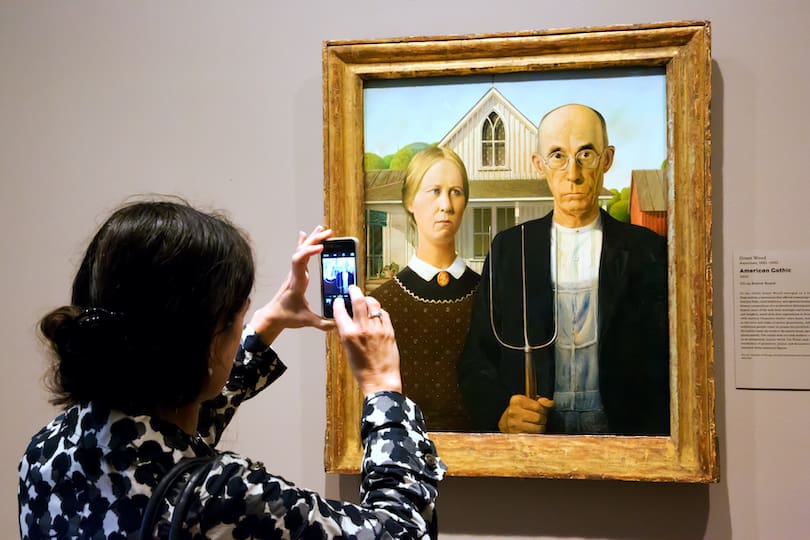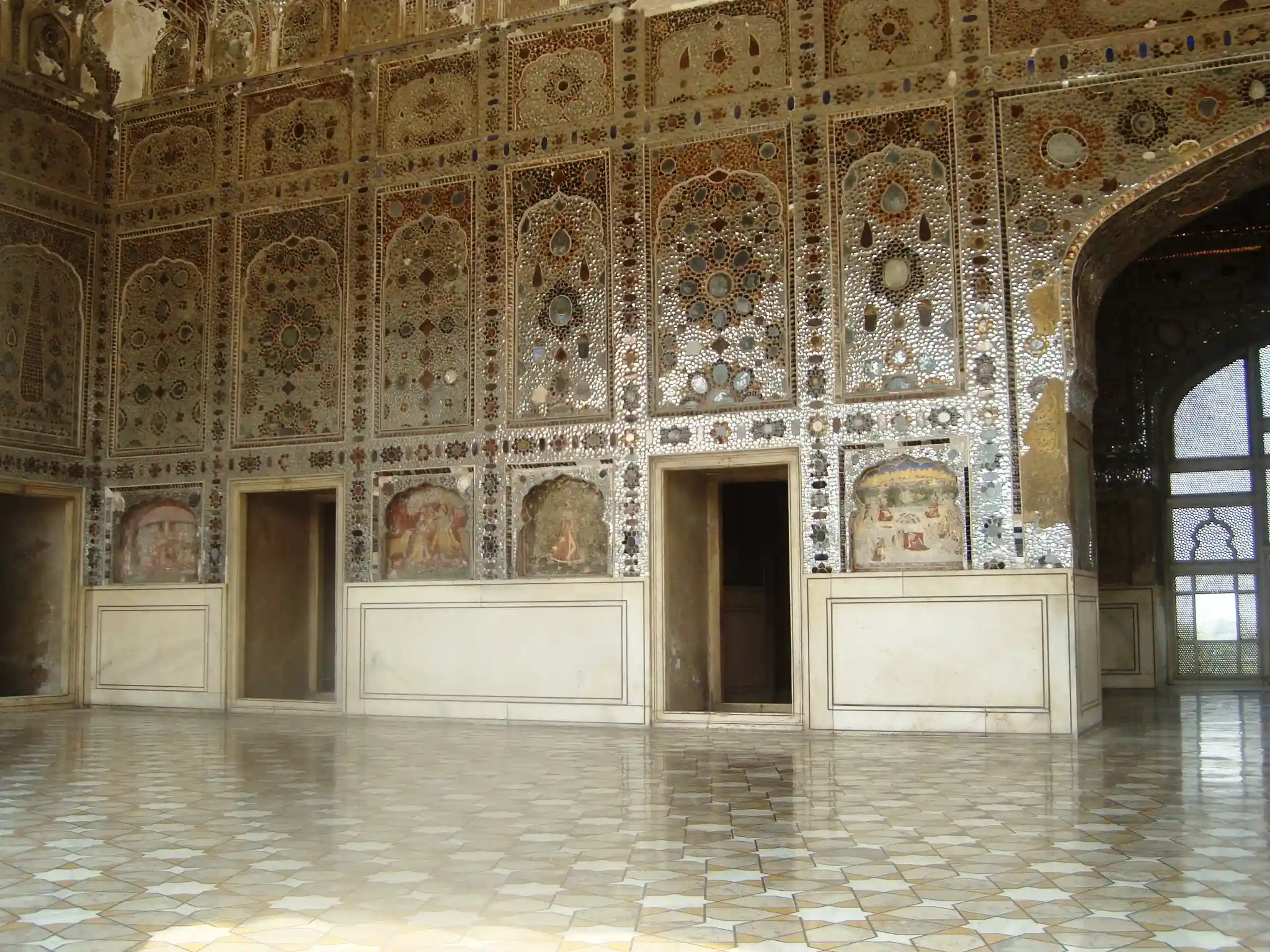Art has the incredible power to transcend time and captivate audiences for generations. Throughout history, certain paintings have achieved iconic status, becoming renowned for their beauty, technique, and cultural significance. In this article, we will explore the 15 most famous paintings of all time, each a masterpiece in its own right. From the enigmatic smile of Mona Lisa to the swirling stars of The Starry Night, these paintings have left an indelible mark on the art world and continue to inspire and mesmerize us today.
I. Mona Lisa by Leonardo da Vinci
A. Background and Historical Significance
Leonardo da Vinci’s Mona Lisa is arguably the most famous painting in the world. Created in the early 16th century, this portrait of Lisa Gherardini, an Italian noblewoman, showcases da Vinci’s mastery of technique and his ability to capture the human spirit. The painting’s enigmatic smile and the hypnotic gaze of the subject have fascinated viewers for centuries.
B. Iconic Features and Artistic Techniques
One of the striking features of Mona Lisa is the use of sfumato, a technique that creates a soft, hazy appearance, particularly in the transitions between colors and tones. The delicate play of light and shadow adds depth and realism to the painting. Additionally, da Vinci’s meticulous attention to detail, from the texture of the skin to the intricate folds of clothing, showcases his exceptional skill as an artist.
C. Cultural Impact and Recognition
Mona Lisa’s fame extends beyond the art world. Its theft in 1911 and subsequent recovery created worldwide headlines, further solidifying its status as a cultural icon. The painting’s allure has inspired countless reproductions, parodies, and references in popular culture, cementing its place in our collective consciousness.
II. The Starry Night by Vincent van Gogh
A. Influences and Inspiration Behind the Painting
Vincent van Gogh’s The Starry Night, painted in 1889, is a mesmerizing depiction of the night sky over Saint-Rémy-de-Provence, a psychiatric hospital where the artist resided. Van Gogh’s emotional state and his love for nature converge in this captivating artwork.
B. Symbolism and Interpretation
The Starry Night is renowned for its swirling, expressive brushstrokes and vibrant colors. The cypress tree in the foreground and the swirling stars in the sky evoke a sense of movement and intensity. The painting has been interpreted as an expression of van Gogh’s inner turmoil and the beauty he found in the midst of his struggles.
C. Artistic Style and Brushwork
Van Gogh’s unique style, characterized by bold, impulsive brushwork, lends The Starry Night its distinctive appearance. The expressive use of color and texture creates a sense of energy and emotion, drawing the viewer into the artist’s subjective experience of the world.
III. The Last Supper by Leonardo da Vinci
A. Biblical Narrative and Context
Leonardo da Vinci’s The Last Supper is an iconic depiction of the biblical event where Jesus shared his final meal with his disciples. Painted between 1495 and 1498, this mural captures a pivotal moment in Christian history and showcases da Vinci’s mastery of perspective.
B. Composition and Perspective Techniques
The Last Supper features a complex composition, with Jesus at the center and the disciples arranged in groups of three on either side. Da Vinci employed linear perspective to create the illusion of depth, drawing the viewer’s attention to the figure of Jesus. The use of vanishing points and diagonals enhances the dramatic impact of the scene.
C. Restoration and Preservation Efforts
Over the centuries, The Last Supper has faced significant challenges due to its location in the refectory of the Convent of Santa Maria delle Grazie in Milan, Italy. Multiple restoration efforts have aimed to preserve and protect this masterpiece from decay and damage caused by humidity, war, and other environmental factors.
IV. The Scream by Edvard Munch
A. Psychological Themes and Emotions Depicted
Edvard Munch’s The Scream, painted in 1893, is a haunting representation of existential angst and human vulnerability. The central figure, with a contorted face and hands covering the ears, embodies a scream of despair that resonates with viewers on a deeply emotional level.
B. Symbolism and Cultural Impact
The Scream is laden with symbolism, reflecting Munch’s personal experiences and his perception of the human condition. The vivid, swirling colors and the twisted, distorted forms convey a sense of inner turmoil and the anxiety of modern life. The painting has become an enduring symbol of existential dread and has influenced numerous artists and thinkers.
C. Different Versions and Interpretations
Munch created several versions of The Scream, including paintings and lithographs. Each rendition offers a slightly different perspective, adding to the overall impact and interpretation of the artwork. The painting’s universal themes continue to resonate with audiences, making it one of the most recognizable and influential works of art.
V. The Persistence of Memory by Salvador Dalí
A. Surrealism and Dreamlike Elements
Salvador Dalí’s The Persistence of Memory, painted in 1931, is a surrealist masterpiece that challenges the boundaries of reality and perception. The melting clocks draped over objects in a desolate landscape create a dreamlike and unsettling atmosphere.
B. Symbolism and Interpretation
The melting clocks in The Persistence of Memory symbolize the fluidity of time and the relativity of its perception. The barren landscape and the distorted forms suggest a sense of decay and the impermanence of existence. Dalí’s meticulous rendering of details and the juxtaposition of familiar objects in unfamiliar ways provoke thought and introspection.
C. Influence on Modern Art
Dalí’s unique artistic vision and his exploration of the subconscious have had a profound impact on modern art. The Persistence of Memory, with its juxtaposition of reality and fantasy, continues to inspire and influence artists, filmmakers, and writers, leaving an indelible mark on the art world.
VI. Guernica by Pablo Picasso
A. Historical Context and Political Statement
Pablo Picasso’s Guernica, painted in 1937, is a powerful depiction of the horrors of war. Created in response to the bombing of the town of Guernica during the Spanish Civil War, this monumental artwork serves as a political statement against violence and oppression.
B. Symbolism and Composition
Guernica is composed of fragmented, distorted figures and objects, conveying the chaos and suffering experienced during the bombing. The bull, the horse, and the weeping figures symbolize the innocent victims caught in the crossfire of war. The monochromatic color palette adds to the somber and haunting mood of the painting.
C. Anti-War Message and Influence
Guernica stands as a timeless condemnation of war and the devastating impact it has on humanity. Its powerful imagery and political message have made it an enduring symbol of peace and a rallying cry against violence. The painting continues to inspire artists and activists fighting for social justice and the preservation of human rights.
VII. The Creation of Adam by Michelangelo
A. Sistine Chapel and Its Significance
Michelangelo’s The Creation of Adam is part of the breathtaking fresco painted on the ceiling of the Sistine Chapel in the Vatican City. Created between 1508 and 1512, this masterpiece showcases Michelangelo’s genius and his contribution to Renaissance art.
B. Biblical Narrative and Symbolism
The Creation of Adam depicts the biblical account of God breathing life into Adam, the first man. The outstretched arms and the space between the fingers of God and Adam have become iconic, symbolizing the connection between humanity and the divine. The painting also conveys the notion of human potential and the pursuit of knowledge.
C. Artistic Techniques and Mastery
Michelangelo’s mastery of anatomy and his ability to portray the human form with precision and grace are evident in The Creation of Adam. The dynamic composition, the play of light and shadow, and the intricate details showcase his technical skill and artistic vision.
VIII. Girl with a Pearl Earring by Johannes Vermeer
A. Mystery and Intrigue Surrounding the Painting
Johannes Vermeer’s Girl with a Pearl Earring, painted in the 17th century, is a captivating portrait that exudes a sense of mystery and intimacy. The identity of the subject and the significance of the earring remain unknown, adding to the painting’s allure.
B. Technique and Use of Light
Vermeer’s meticulous technique and his mastery of light are evident in Girl with a Pearl Earring. The play of light on the girl’s face and the shimmering pearl create a sense of depth and luminosity. The simplicity of the composition allows the viewer to focus on the subject’s enigmatic gaze.
C. Cultural Impact and Popularity
Girl with a Pearl Earring has gained widespread recognition and popularity in recent years, thanks in part to Tracy Chevalier’s novel and the subsequent film adaptation. The painting’s timeless beauty and the air of intrigue surrounding it continue to captivate audiences worldwide.
IX. The Birth of Venus by Sandro Botticelli
A. Mythological Inspiration and Symbolism
Sandro Botticelli’s The Birth of Venus, painted in the 15th century, is a celebration of beauty and love. Inspired by classical mythology, the painting depicts the birth of Venus, the goddess of love and beauty, from a seashell.
B. Composition and Style
The Birth of Venus is characterized by graceful figures, flowing drapery, and a sense of harmony and balance. The composition draws inspiration from classical art, with Venus standing as the central figure in a symmetrical and balanced composition. The delicate use of colors and the ethereal atmosphere enhance the painting’s enchanting quality.
C. Influence on Renaissance Art
The Birth of Venus represents the ideals of the Renaissance, with its focus on humanism, beauty, and the revival of classical themes. Botticelli’s graceful style and his ability to capture the essence of the human form have influenced generations of artists and continue to inspire contemporary art.
X. The Night Watch by Rembrandt van Rijn
A. Group Portrait and Storytelling
Rembrandt van Rijn’s The Night Watch, painted in 1642, is a monumental group portrait that defies conventions and tells a captivating story. Commissioned by the civic guard of Amsterdam, this painting showcases Rembrandt’s mastery of composition and his ability to capture individual personalities.
B. Use of Light and Shadow
The Night Watch is renowned for its dramatic use of light and shadow. Rembrandt’s chiaroscuro technique creates a sense of depth and drama, highlighting the central figures and drawing attention to the action unfolding within the painting. The interplay of light and dark adds a dynamic quality to the artwork.
C. Restoration and Significance
Over the years, The Night Watch has undergone several restoration efforts to preserve its integrity and address damage caused by aging and previous restoration attempts. The painting’s historical and cultural significance, as well as its artistic brilliance, have solidified its place as one of the most celebrated works of art in the world.
XI. The Great Wave off Kanagawa by Katsushika Hokusai
A. Japanese Ukiyo-e Art and Cultural Context
Katsushika Hokusai’s The Great Wave off Kanagawa, created in the early 19th century, is a famous example of Japanese ukiyo-e woodblock printing. Ukiyo-e, meaning “pictures of the floating world,” captured the essence of everyday life in Japan during the Edo period.
B. Symbolism and Visual Impact
The Great Wave off Kanagawa depicts a towering wave about to crash over three small boats and Mount Fuji in the background. The wave represents the overwhelming power of nature, while Mount Fuji symbolizes stability and resilience. The print’s dynamic composition and the contrasting use of light and dark create a sense of motion and drama.
C. Influence on Western Art
The Great Wave off Kanagawa had a profound influence on Western artists, particularly the Impressionists and Post-Impressionists. Its flattened perspective, vibrant colors, and attention to atmospheric effects challenged traditional Western artistic conventions and paved the way for new artistic movements.
XII. The Creation of Adam by Diego Velázquez
A. Baroque Realism and Portraiture
Diego Velázquez’s The Creation of Adam, painted in the 17th century, is a masterpiece of baroque realism and portraiture. Velázquez was known for his ability to capture the essence and individuality of his subjects, and this painting is no exception.
B. Historical and Religious Context
The Creation of Adam depicts the biblical account of God creating Adam, the first man. Velázquez’s interpretation emphasizes the human aspects of the story, portraying Adam as a vulnerable and mortal figure. The artist’s attention to detail and his ability to convey emotions make the painting resonate with viewers on a personal level.
C. Influence and Legacy
Velázquez’s innovative approach to portraiture and his ability to capture the human spirit had a profound influence on subsequent generations of artists. The Creation of Adam stands as a testament to his skill and his contribution to the development of Western art.
XIII. The Garden of Earthly Delights by Hieronymus Bosch
A. Symbolism and Allegory
Hieronymus Bosch’s The Garden of Earthly Delights, created in the 16th century, is a triptych that explores the themes of sin, morality, and the fleeting nature of earthly pleasures. Each panel presents a different narrative, inviting viewers to reflect on the consequences of human actions.
B. Imaginative and Surreal Imagery
The Garden of Earthly Delights is known for its fantastical and often bizarre imagery. The central panel depicts a lush, otherworldly landscape populated by an array of strange and whimsical creatures. Bosch’s vivid imagination and attention to detail create a visual feast that sparks the viewer’s curiosity and imagination.
C. Interpretation and Meaning
The meaning of The Garden of Earthly Delights remains subject to interpretation. Some see it as a warning against indulgence and excess, while others view it as a celebration of human desires and the pursuit of pleasure. Regardless of interpretation, the painting’s enigmatic nature and its ability to provoke contemplation have made it an enduring masterpiece.
XIV. The Birth of Venus by Alexandre Cabanel
A. Neoclassical Revival and Idealized Beauty
Alexandre Cabanel’s The Birth of Venus, painted in the 19th century, is a prime example of the neoclassical style that emerged during the Romantic era. The painting draws inspiration from classical mythology and celebrates idealized beauty and grace.
B. Depiction of the Goddess of Love
The Birth of Venus portrays the goddess Venus emerging from the sea, a shell cradling her as she floats on the waves. Cabanel’s meticulous attention to detail and his emphasis on anatomical accuracy reflect the neoclassical ideals of balance and harmony. The painting’s soft colors and ethereal quality contribute to its overall romantic appeal.
C. Cultural Impact and Controversy
The Birth of Venus caused controversy when it was first exhibited due to its sensual depiction of the female form. However, it also garnered praise for its technical brilliance and adherence to classical ideals. The painting’s enduring popularity and its influence on subsequent artists attest to its lasting impact on the art world.
XV. American Gothic by Grant Wood
A. Regionalism and Depiction of American Life
Grant Wood’s American Gothic, painted in the 20th century, is an iconic portrayal of rural American life. The painting, set against the backdrop of a farmhouse, features a stern-looking farmer and his daughter, often interpreted as representing the virtues of hard work, resilience, and traditional values.
B. Symbolism and Interpretation
American Gothic has been subject to various interpretations. Some see it as a celebration of American identity and the resilience of the working class, while others view it as a commentary on the hardships and isolation experienced by rural communities. The painting’s somber mood and the stoic expressions of the subjects add to its enigmatic quality.
C. Cultural Significance and Parody
American Gothic has become an iconic symbol of American art, with its imagery reproduced and parodied in various forms of popular culture. The painting’s distinctive style and its representation of the American experience continue to resonate with audiences, making it one of the most recognizable works of art in the United States.
Conclusion
The world of art is rich with masterpieces that have left an indelible mark on human culture and history. From the enigmatic smile of the Mona Lisa to the vibrant swirls of The Starry Night, these famous paintings continue to captivate and inspire generations of art enthusiasts. Each artwork carries its own unique story, symbolism, and cultural significance, inviting viewers to delve into the depths of human emotions, explore new artistic frontiers, and ponder the complexities of existence.
As we admire these remarkable creations, we are reminded of the power of art to transcend time and connect us to the past, present, and future. The 15 paintings discussed in this article serve as a testament to the extraordinary talents of their creators and the enduring impact they have had on the art world and beyond.
FAQs (Frequently Asked Questions)
1. Are these paintings still on display? Yes, many of these famous paintings are housed in prestigious museums and galleries around the world, where they can be admired by visitors.
2. Can I buy a replica or print of these paintings? Yes, replicas and prints of these famous paintings are available for purchase in various forms, allowing art enthusiasts to enjoy these masterpieces in their own homes.
3. What makes these paintings so famous? These paintings are famous for a variety of reasons, including their artistic brilliance, cultural significance, and the profound impact they have had on the art world. They continue to captivate viewers with their beauty, symbolism, and ability to evoke emotions.
4. Can you recommend books or documentaries about these paintings? There are numerous books and documentaries available that delve into the history, symbolism, and significance of these famous paintings. Some recommendations include “The Story of Art” by E.H. Gombrich and the documentary series “Simon Schama’s Power of Art.”
5. How can I learn more about art and its history? To learn more about art and its history, you can visit art museums, read books and articles on art history, take art appreciation courses, or explore online resources that provide insights into various artistic movements and individual artists.



















It’s perfect time to make some plans for the future and it is time to be happy. I have read this post and if I could I want to suggest you few interesting things or advice. Perhaps you can write next articles referring to this article. I want to read even more things about it!
Este site é realmente fascinate. Sempre que consigo acessar eu encontro coisas boas Você também vai querer acessar o nosso site e descobrir detalhes! conteúdo único. Venha descobrir mais agora! :)
I really enjoy examining on this internet site, it holds fantastic articles. “The great secret of power is never to will to do more than you can accomplish.” by Henrik Ibsen.